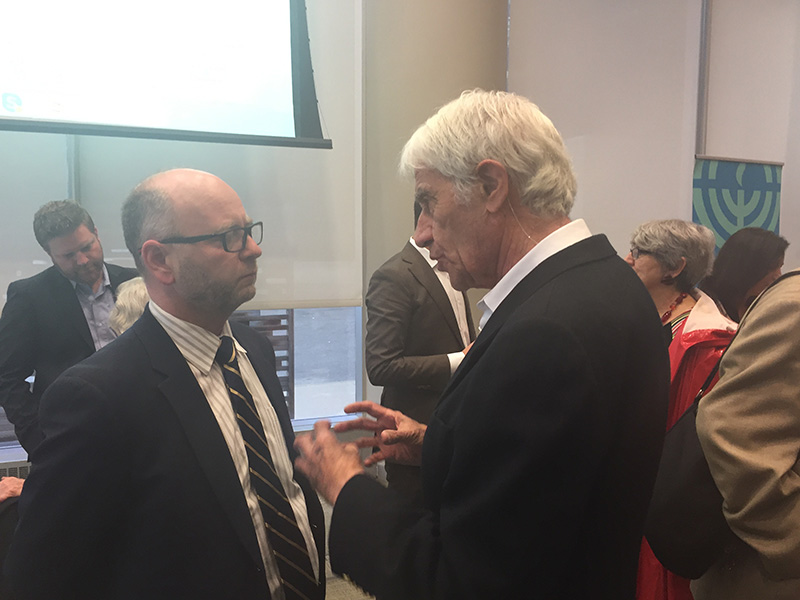A new initiative to digitize the invaluable testimony of Holocaust survivors should help permanently preserve this key resource for future generations, say archivists who are leading the effort.
In Canada, precisely 1,253 survivors’ audio-visual histories, recorded from the mid-1980s to the early ’90s, were in danger of succumbing to time. Stored on outdated VHS and Beta cassettes, the tapes showed their age with brittleness, worsening quality and even breakage. Playing them became a challenge as VCRs became scarcer. They languished on shelves and under desks.
The treasure trove was in danger of being lost forever.
Coming to the rescue was the USC Shoah Foundation’s Visual History Archive. Based in Los Angeles and founded in 1994 by film director Steven Spielberg as the Survivors of the Shoah Visual History Foundation, the archive will forever be able to access Canadian survivors’ testimonies with the click of a mouse, or whatever technology comes next.
It took two years to digitize and index the material. The state-of-the-art technology that allowed the preservation will itself be updated as needed.
The archive had promised Holocaust survivors “that we would preserve testimonies we have been given in perpetuity. As it turns out, perpetuity is a very long time,” Stephen Smith, executive director of the Shoah Foundation, told a group of Holocaust survivors and others Sept. 29 at Toronto’s Sarah and Chaim Neuberger Holocaust Education Centre.
In demonstrating the launch of the integration of the Canadian collection into the archive, Smith explained that the material will be stored in a special digital preservation unit at USC, “a safe repository” that will be checked every three months for glitches.
It will also be tamper-proof, he told the survivors present. “If somebody goes in and alters the video and changes your ‘yes’ to a ‘no,’ we will know that. So it means we can always go back to your testimony exactly how you gave it.”
All the histories have also been fully indexed and cross-referenced for place names and other keywords. Anyone researching “Auschwitz” and “Ottawa,” for example, would find a survivor of that camp who lived in the capital.
The videos were recorded mainly in Toronto and Montreal, with the rest in Calgary, Edmonton, Ottawa and the Maritimes.
“This collection represents the legacy of hundreds of survivors who rebuilt their lives in Canada,” Carson Phillips, director of the Neuberger Centre, said in a statement. “It is imperative that these experiences be told in the first person, for the power of their narratives transcends societal barriers and offers learning opportunities for everyone who engages with them.”
The federal government allocated $800,000 to digitize and preserve the Canadians’ testimony.
In all, the online portal allows users to search through and view more than 53,000 video testimonies of survivors and witnesses to genocide. Initially geared to Holocaust histories, the archive has grown to include survivor and witness testimony from the Armenian genocide that began in 1915; the Nanjing Massacre of 1937; the slaughter of the Tutsi in Rwanda in 1994; and the Guatemalan genocide of 1978 to 1996.
Smith said it would take 13-1/2 years to view all the testimonies, which are given in 41 languages. It is billed as the largest archive of its kind in the world and is available at 55 colleges and universities in 13 countries. It also links to 120 other archives.
Starting Sept. 29, it became accessible at computer kiosks in the Frank and Anita Ekstein Holocaust Resource Centre at the Neuberger Centre.
